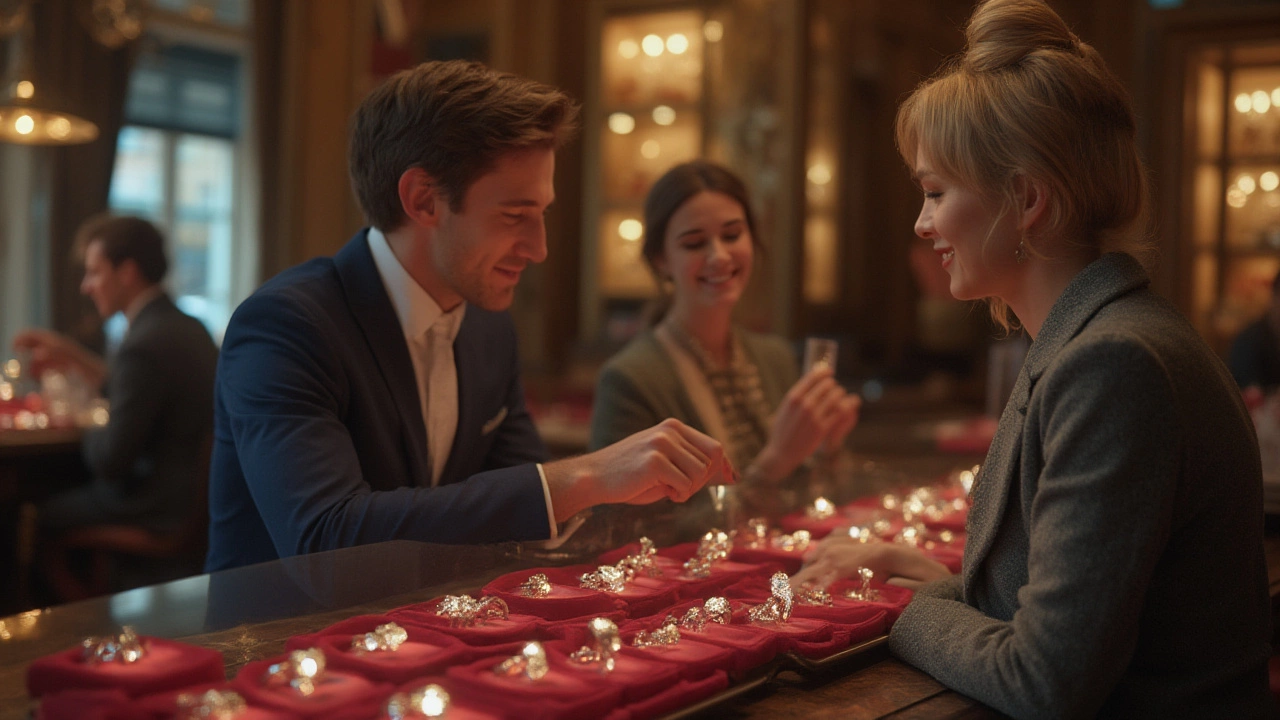Wedding Ring Carats: What You Need to Know
If you’re looking at wedding rings, the word “carat” pops up a lot. It tells you how much diamond or gemstone is in the ring. Bigger carat usually means a bigger stone, but it also means a higher price. The trick is finding a carat that fits your hand, your budget, and the look you want.
How Carat Size Changes the Look
A 0.5‑carat stone looks noticeably smaller than a 1‑carat stone, but the difference isn’t just about weight. The cut, setting, and how the stone sits on your finger all play a role. A well‑cut 0.75‑carat stone can appear almost as big as a 1‑carat stone with a poorer cut. Look at the ring on your hand, not just the photos, before deciding.
Balancing Carat, Clarity and Cost
Carat is only one part of the price puzzle. If you stretch your budget for a higher carat, you might have to settle for lower clarity or color. Many couples pick a 0.75‑carat stone with good clarity instead of a 1‑carat stone that looks cloudy. Ask the jeweler for a side‑by‑side comparison so you can see the trade‑off.
Finger size matters too. A larger finger can hide a bigger stone, while a small finger can make a 0.5‑carat stone look huge. Try on rings with different carats to see what feels right. Remember, the ring should feel comfortable, not heavy.
Consider the setting style. A halo setting adds smaller stones around the center stone, making the overall look bigger without increasing the carat. Prong settings lift the stone up, catching more light, while bezel settings sit the stone deeper and can make it appear smaller.
Don’t forget the long‑term. A wedding ring is a daily wear piece. Choose a carat that you’ll still love ten years from now. Trends change, but a classic size that suits your style will stay in fashion.
Here’s a quick cheat sheet:
- 0.25–0.30 ct: Small, subtle, good for tiny hands or low budgets.
- 0.40–0.60 ct: Classic look, works for most fingers.
- 0.70–0.90 ct: Statement size, noticeable sparkle, higher cost.
- 1.00 ct and up: Luxury feel, best for larger hands or high‑budget couples.
Talk to your jeweler about certification. A GIA or IGI report guarantees the carat weight, so you avoid any surprise later.
Finally, trust your gut. If a stone feels right when you try it on, that’s a good sign. The right carat is the one that looks great on your hand, fits your budget, and makes you smile every time you look at it.

- Jul, 6 2025
- Comments 0